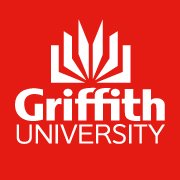Full description
Validation of maturation ponds in order to enhance safe and economical water recycling. This project was funded by the Australian Water Recycling Centre of Excellence (AWRCE) and contributes to a broader research program on maturation ponds funded by the Queensland Science Funding Support (QSFS). Maturation ponds/lagoons are used worldwide as secondary or tertiary steps for wastewater treatment, and in some cases, as the only treatment. In Australia, hundreds of municipal treatment systems rely on pond technology (facultative and maturation ponds) as a disinfection process, particularly in smaller towns and rural areas. Larger treatment plants also sometimes rely on maturation ponds for additional disinfection (polishing) purposes. The overarching goal of the current project was to draw on different types of disciplinary knowledge (hydrodynamic, microbiological, ecotoxological and risk assessment) and modelling techniques to investigate maturation pond performance. The AWRCE project considered five ponds located in different geographical locations. Three ponds were located in Southeast Queensland (i.e., Helidon, Forest Hill and Laidley) all operated by Queensland Urban Utilities and two in the Northern Territory (i.e., Maningrida and Ngukurr), both operated by the Power and Water Corporation (PWC). Sampling was performed at each of these ponds, but to varying intensities for a number of reasons. Helidon was the most suitable for intensive ongoing investigation, due to its observed disinfection performance (necessary for model validation), proximity to the research team, and logistical support from the pond operators. Ngukurr was studied intensively for a limited duration (one week), due to logistical constraints related to its remote location and limited support for ongoing monitoring. Therefore, Forest Hill, Laidley, and Maningrida ponds were excluded after preliminary assessments because of their design and operational issues. Hydrodynamic, microbiological, ecotoxological and risk assessment have been collected from the Helidon pond over the period of September 2013 through to October 2015 via multiple field trips including an intensive sampling period (28/01/2015 – 10/03/2015) and from Ngukurr pond in a one-week intensive sample field trip in June 2014. The important findings of the study include: 1 From microcosm studies, light was found to be the most important factor in decay processes, with predation having only a minor impact; 2 There was efficient removal of E. coli at the Helidon pond, which typically has a 14-day detention time, but less removal at the Ngukurr pond which has only a 3-day detention time. The removal efficiency is impacted by the fact that Helidon is a baffled pond and Ngukurr is not and by their different sizes (length and width) and loading conditions; 3 Quantitative Polymerase Chain Reaction (qPCR), while cost and time effective, was found to be useful for confirmation of detection of bacterial pathogens such as Campylobacter jejuni and Salmonella enterica, whereas culture-based tests could lead to false-positives results. 4 Decay rate coefficients for enterococci were higher than for E. coli based on the microcosm studies. 5 An assessment of the chemicals in the pond effluent showed that pond treatment removes limited amounts of emerging organic contaminants. It is considered that the small population size at Helidon contributes only low input levels of most compounds. 6 An empirical rule of thumb exists that suggests a minimum of 20 sampling events with duplicate samples should be used. 7 The performance of the Helidon pond was modelled using the software package MIKE 3 (Danish Hydraulic Institute - DHI). Numerical simulation results by MIKE 3 were found to effectively reflect observed performance at the Helidon pond for E. coli removal and provided a useful tool for investigating pond performance for different conditions.Issued: 2016
Data time period:
2012-10-01 to 2016-07-30
Subjects
3-D simulation |
Chemical Sciences |
Engineering |
Environmental Engineering |
Environmental Chemistry (Incl. Atmospheric Chemistry) |
Environmental Engineering Modelling |
Environmental and Occupational Health and Safety |
Medical and Health Sciences |
MIKE 3 Folw model |
Other Chemical Sciences |
Public Health and Health Services |
Pathogen decay rate and decay kinetics |
Risk prioritisation for chemical |
Validation of maturation pond performance |
optimal sampling scheme |
pathogen removal |
qPCR and culture-based methods |
water recycling |
User Contributed Tags
Login to tag this record with meaningful keywords to make it easier to discover
Identifiers
- Handle : 10072/395788



